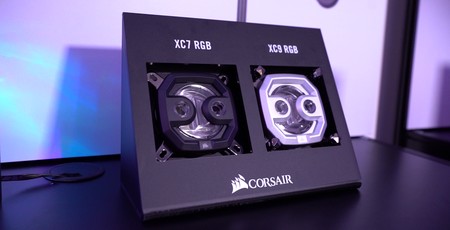
Corsair has dedicated pretty much its entire (large) suite at Computex 2019 to its Hydro X custom water-cooling parts.
Corsair has long been a considerable player in the AIO scene with its Hydro series coolers making waves (sorry…) since 2009. Now it's looking to step into the custom loop scene with Hydro X. We’re going to be doing a thorough analysis of the Hydro X components along with a build using them later on; for now, let’s take a look through the offerings to get an idea of what to expect.
Corsair has been teasing custom loop parts for a couple years now; you may remember some re-branded Aquacomputer concept blocks that were shown off at Computex 2017 and 2018. The final articles have at last arrived.
As you would imagine, the emphasis is very much on expanding Corsair's RGB ecosystem through integration with its control software, iCUE. The idea is to bring a cohesive aesthetic into play across all the components, be it the reservoir, blocks, or even supporting accessories such as the existing LED strips and peripherals.
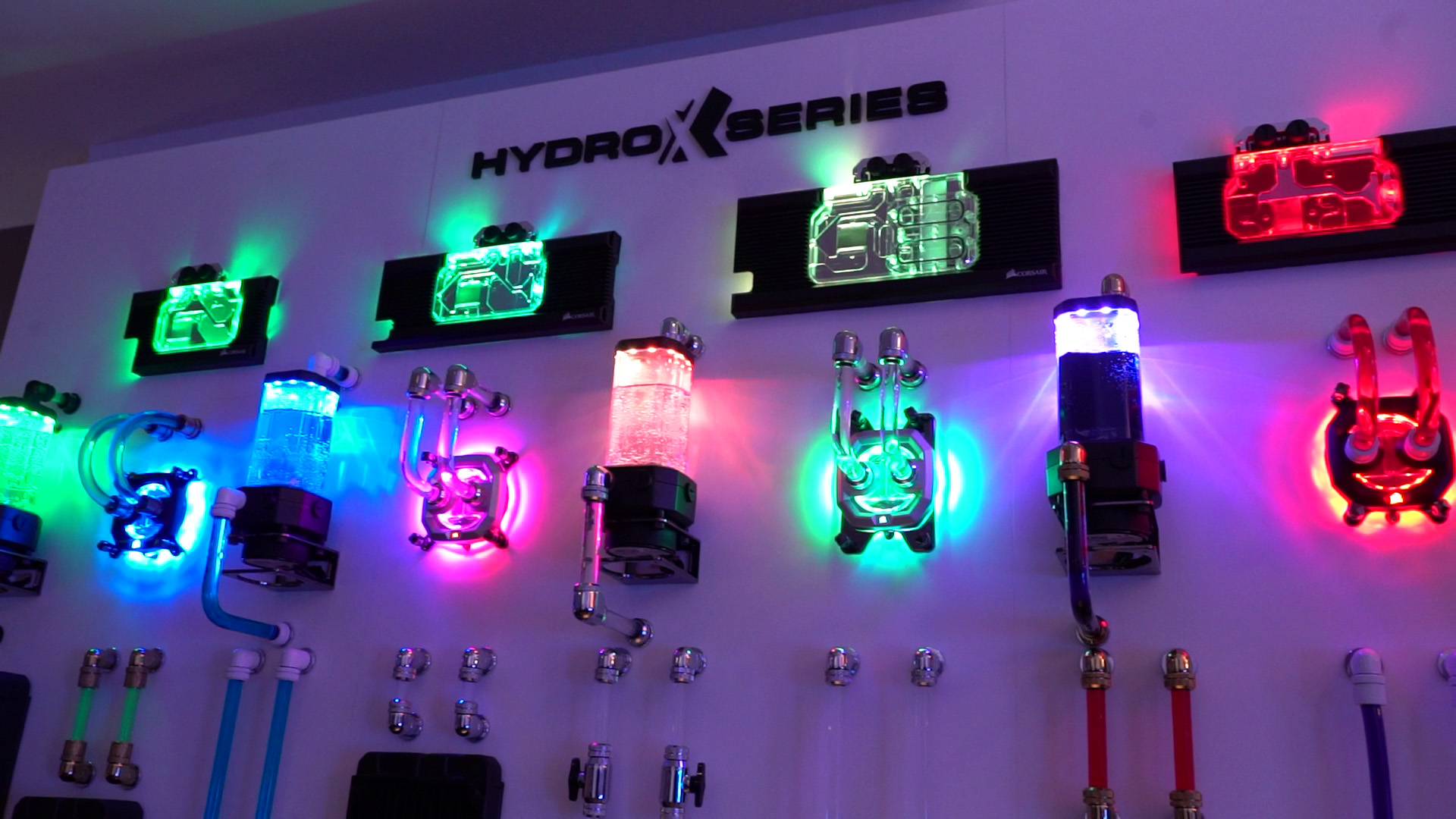
Additionally, Corsair is targeting users who perhaps wouldn’t previously have considered opting for a custom loop before. To do this, it's constructed a comprehensive configurator that aims to take out the complexity from choosing the necessary parts to build a loop. Being a case manufacturer, it's in a good position to advise the size, number, and positioning of radiators, as well as calculating things like the number of fittings, tubing runs, and aesthetic outlines.
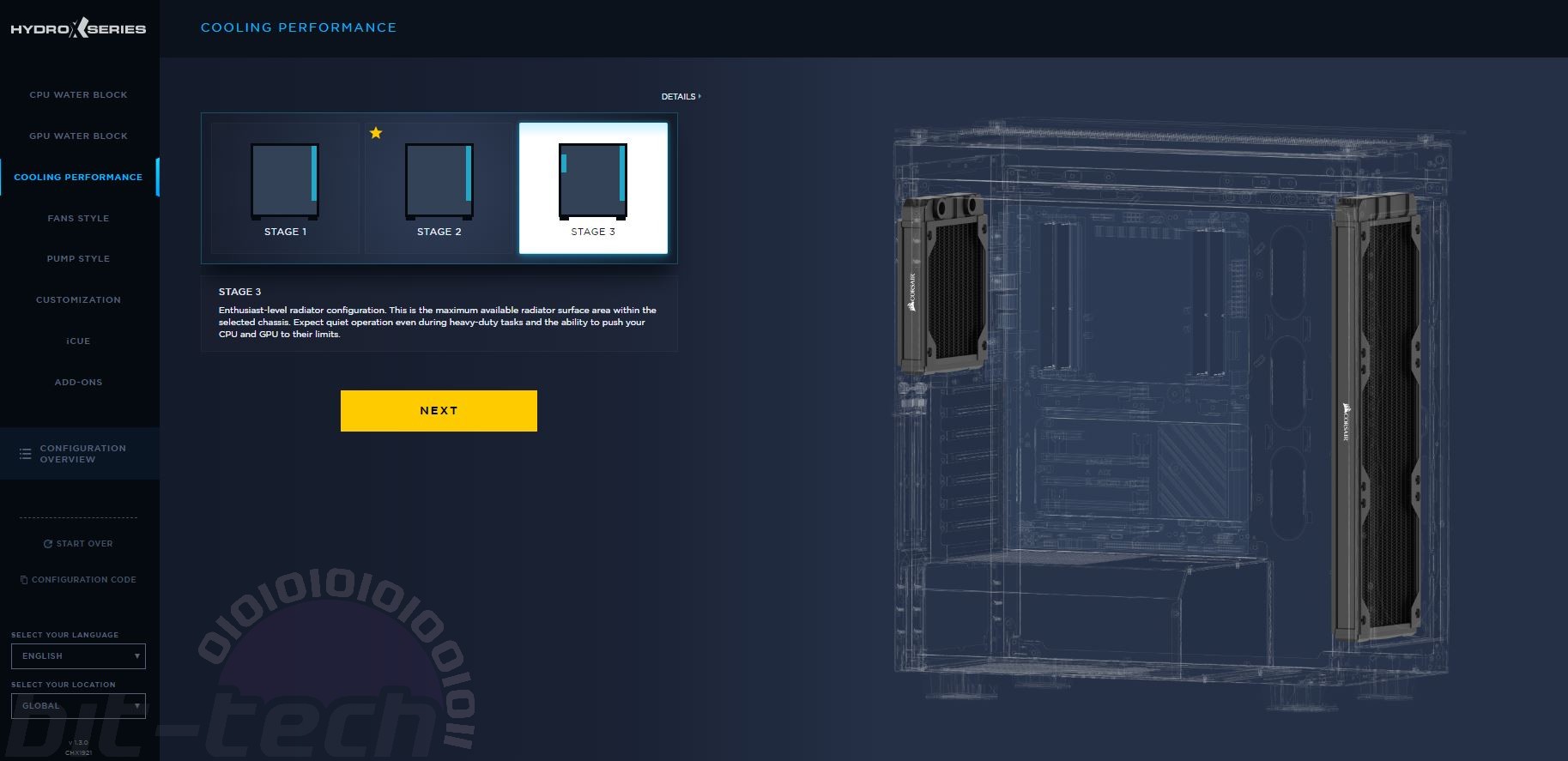
The configurator is a web-based app. You simply enter your desired case and intended hardware and let it guide you through the steps. The built-in TDP calculator aims to keep things straightforward, with buttons that take into account added heat from overclocking both CPUs and GPUs. After having a play around with it on the suite floor I found it to be very intuitive to use. The menus are straightforward and the graphics responsive and clear, and it does a good job of making sure you don’t get lost. Naturally, you won’t be using a configurator like this to design very complex loops, but then you likely wouldn’t need it beyond double checking part compatibility at that point anyway.
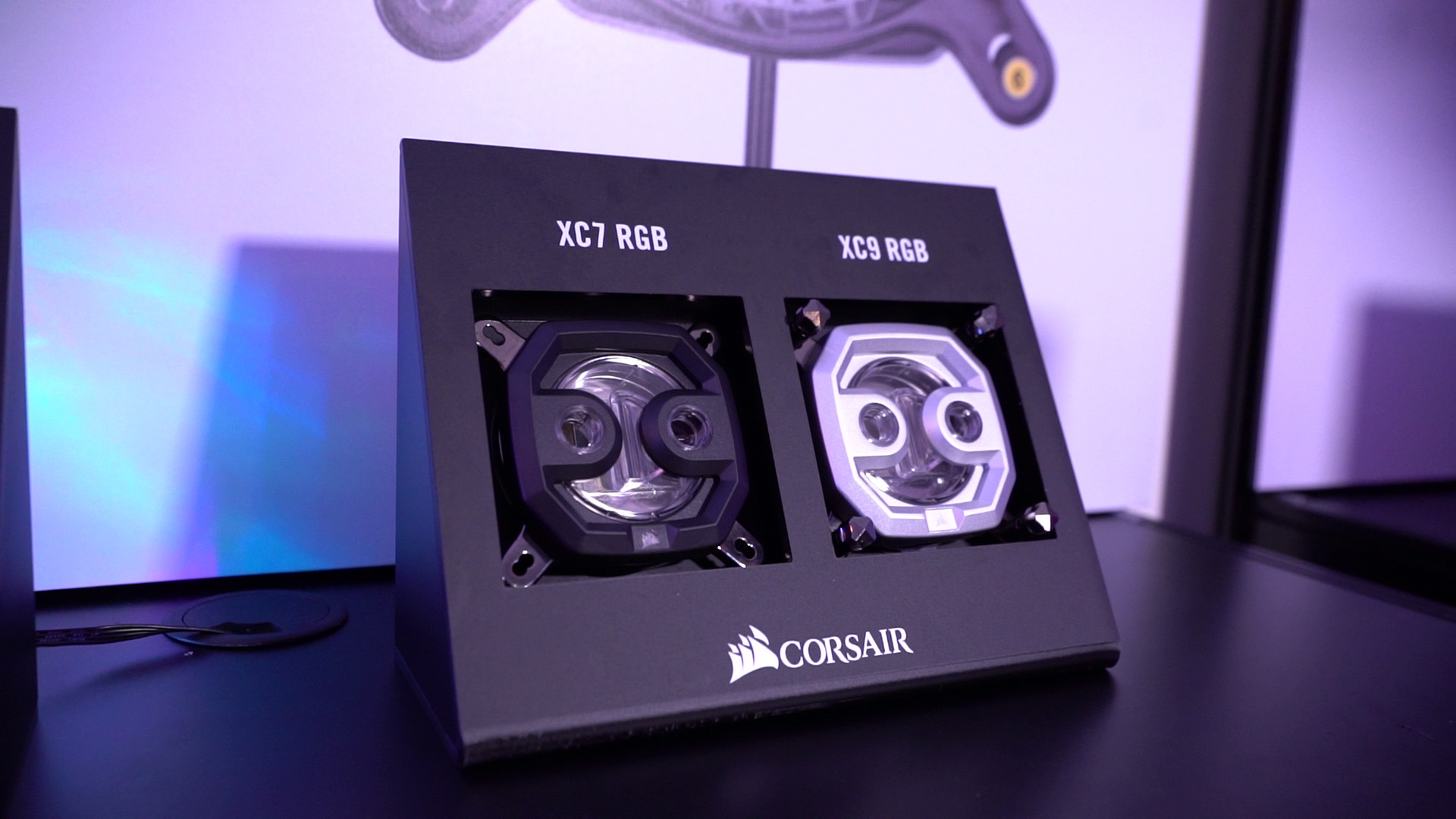
In terms of the actual components, Corsair has decided to focus on a few key hero products that are designed in-house, with the other parts being produced via carefully selected OEMs. The in-house parts are the CPU blocks, GPU blocks, and the pump/reservoir combo. The fittings are being produced by Bitspower, the radiators by Hardware Labs, and the coolant by Mayhem’s. If you’re at all into water-cooling you should recognise those names and be nodding approvingly.
The CPU block comes in two flavours: the XC7, designed for consumer sockets such as AM4 and LGA 115X, and the XC9, which is aimed at Intel’s 2066 and AMD’s TR4. Both blocks feature an injection-moulded nylon centre section with 16 addressable RGB LEDs, with the XC9 boasting an aluminium top-cover and denser fin array.
The GPU blocks are a slightly more traditional affair, featuring CNC-milled copper heat plates and machined acrylic top sections for coolant visibility and 16 addressable RGB LEDS, and they also rock a flow indicator for some added flair, I suppose. The exterior bodies are aluminium and the blocks come with thermal pads and paste pre-applied. We’ll be delving deeper into their construction and performance at a later date. Compatibility is fairly strong out of the gate, with support for reference 1080 Tis, 2070/2080/2080 Ti and Strix versions along with Vega 56/64 cards.
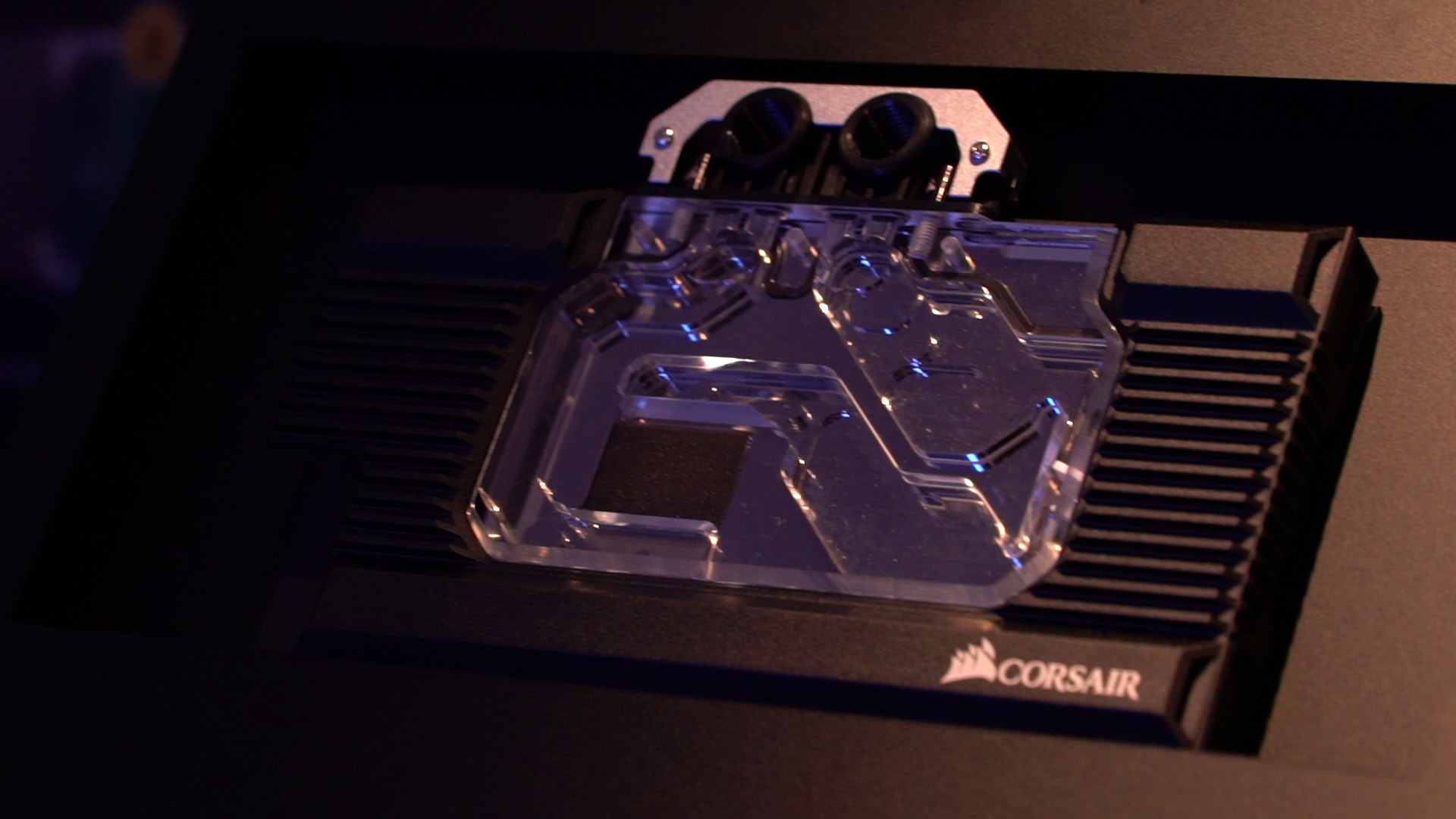
The final piece of the puzzle is the pump/reservoir combo unit. This part is fully injection-moulded, supposedly from a ‘very premium nylon’. Make of that what you will, but like the others it comes with extensive LED lighting along with a host of extras. Since Corsair is aiming these products at first time water-coolers, it made sure to bundle lots of mounting brackets and also a coolant temperature sensor with the unit.
On the OEM parts front, the radiators will have all the regular sizes and thicknesses (so 120-480mm and 140-420mm). The fittings currently come in four finishes: black, silver, white, or polished brass, with potential for more depending on market reception. To keep things straightforward, Corsair has opted to keep the selection fairly basic; should you need something more exotic, one could easily just add others where needed from different manufacturers.
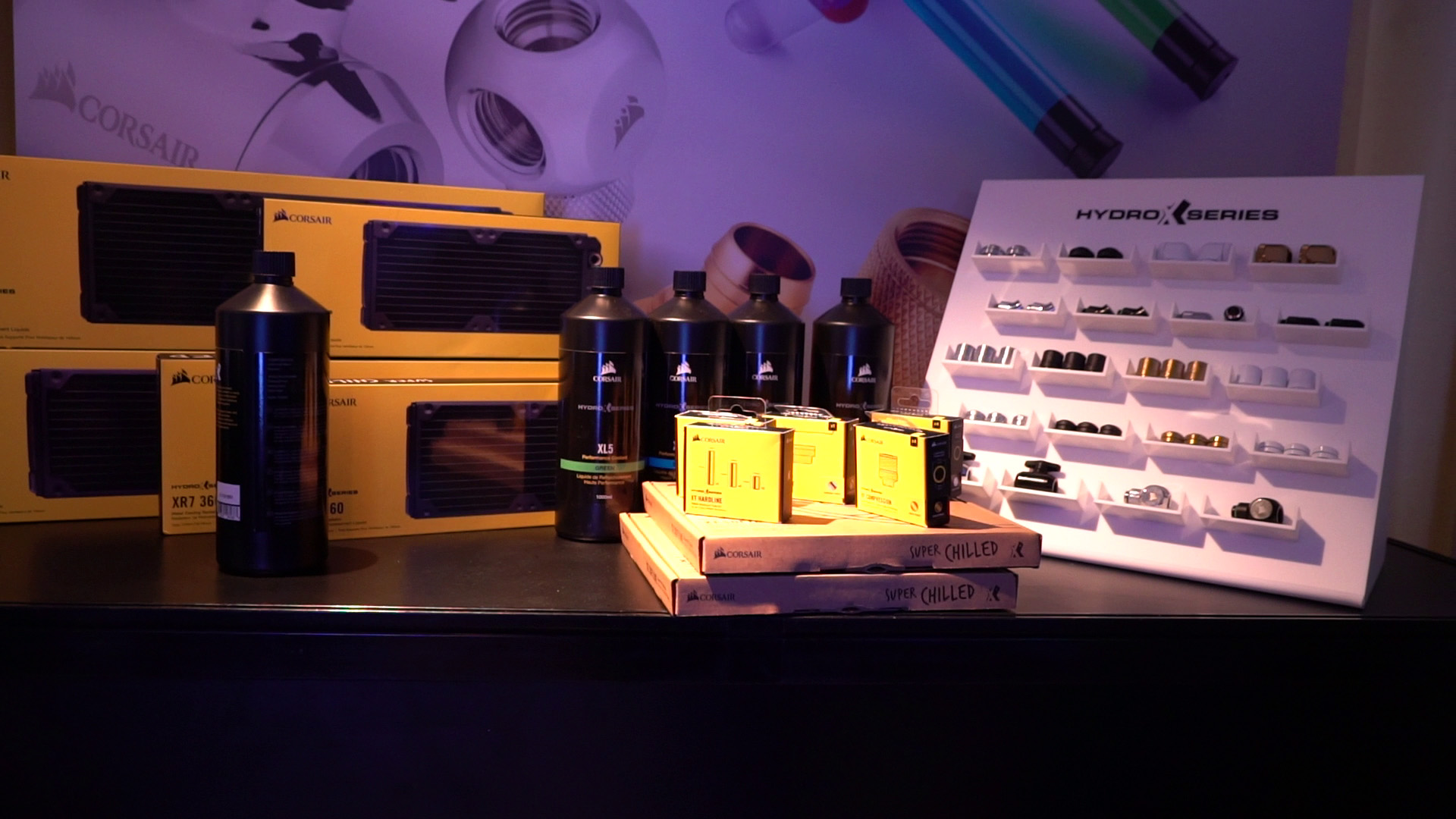
Tubing comes in three varieties: 13/10mm soft PVC, 12/10mm acrylic, and 14/10mm acrylic. There are no plans to add PETG to the mix (personally I think this is a good decision), but there are talks of adding nickel-plated copper down the line. Currently coolants are limited to clear, green, red, blue and purple, but again there are talks of adding pastels in the future.
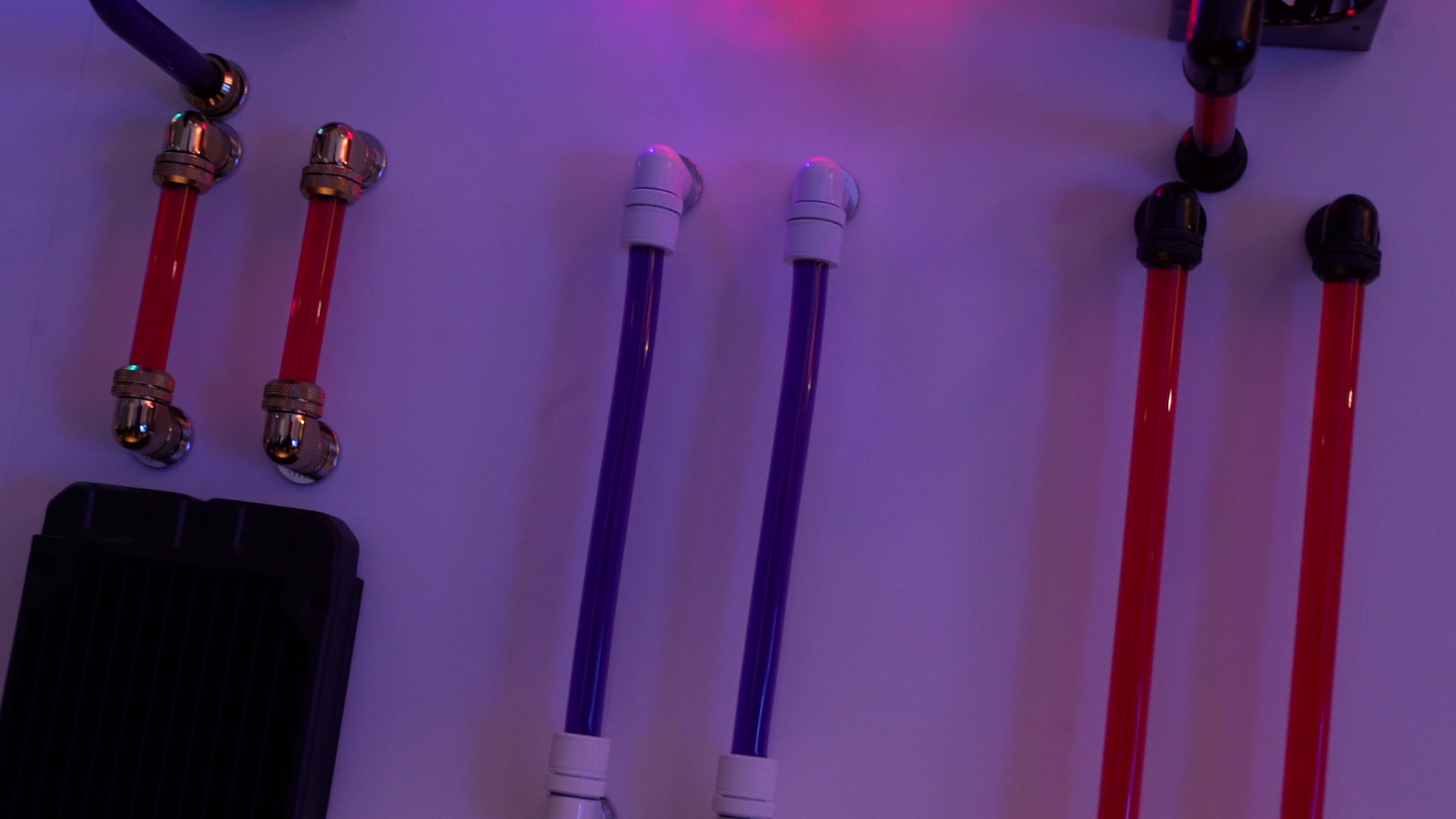
Pricing-wise for the hero products, you’re looking at £69.99/€79.99/$74.99 for the XC7 CPU block, £74.99/€84.99/$79.99 for the XC9 CPU block, £134.99-164.99 for the XG7 GPU blocks (varies on card specifics), and £149.99/€164.99/$154.99 for the XD5 RGB pump/res combo.

MSI MPG Velox 100R Chassis Review
October 14 2021 | 15:04

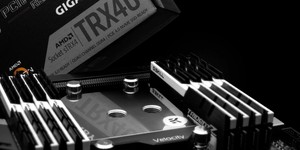

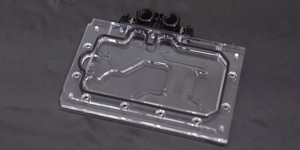




Want to comment? Please log in.